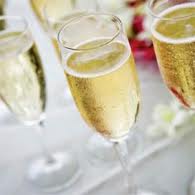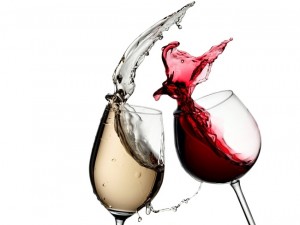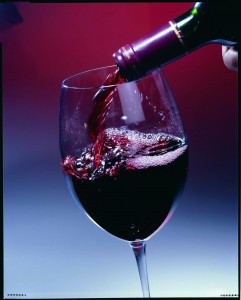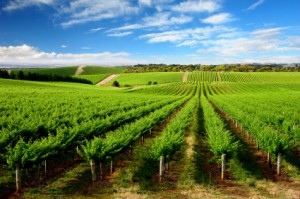For many wine drinkers, summer means switching from red wines to white wines, but for me it’s more about choosing different red and white wines. After all, I’m an equal opportunity imbiber. I like both red and white wine, and I don’t relish giving up either, even for several months. In my ideal world every main meal throughout the year would begin with a tantalizing white wine to whet the taste buds, continue with a kick butt red, and follow with a meditative wine of either persuasion. But alas, my wallet and liver won’t support that much indulgence. So, I choose.
About this time of year, I think Bordeaux Blanc, Sauvignon Blanc, Albariño, Verdejo, and the multitude of fresh, charming white wines that emanate from Italy. These are the kinds of white wines that make sitting on the porch with glass in hand a truly noble ambition – a time to relax, talk, watch the sun go down, or just wait for the grill to be hot enough to begin preparing dinner. That would also be time to decide what red wine to serve with whatever goes on the grill. For me, summer means choosing young red wines from the South of France, full-bodied aromatic offerings from California and South America, and Spanish reds of all sizes and styles. As the product of hot, dry Mediterranean climates, these reds can hold up to summer heat and whatever comes off the grill. Just remember to keep summer reds cool, which can be a real challenge. In hot weather, there’s nothing wrong with putting a bottle of red wine in the refrigerator for 15-20 minutes to bring it to cellar or cool room temperature (60°-65°F). I do, and I’m not ashamed. Life’s just too short not to enjoy red wine all year long.
Salud!
Don




 It’s about time that New World wineries caught up with consumers’ tastes. What do I mean by that? Several things! First, more and more wineries in Australia, California, and elsewhere now make proprietary wines, which means wineries are no longer exclusively beholden to varietal bottling (whereby 75%-100% of a given wine comes from a single grape variety), and are making outstanding wines from blends of grapes. Don’t get me wrong. I am not opposed to varietal bottling. On the contrary, many great varietal wines abound as the wealth of outstanding Cabernet Sauvignon, Chardonnay, Syrah, Zinfandel, and other varietal offerings will attest. My point is that varietal bottling isn’t the be all and end all, or the only way to make great wine. Using two or more great varieties in varying proportions often increases the complexity and drinking pleasure of a wine. Why limit our pleasure to one primary grape? So many excellent meritage selections and proprietary wines (typically blends with such given names as Sassolino, The Berry Box, or Honey Pot) now abound. It’s a new day and a new year for wine. Besides, Bordeaux, Chianti, Rioja and other great wines region have been blending grapes for millennia. A varietal name on a bottle is no guarantee of quality. Conversely, many blends and proprietary wines constitute some of the most exciting wines being made in America today at all price points, so don’t be afraid to discover these treasures.
It’s about time that New World wineries caught up with consumers’ tastes. What do I mean by that? Several things! First, more and more wineries in Australia, California, and elsewhere now make proprietary wines, which means wineries are no longer exclusively beholden to varietal bottling (whereby 75%-100% of a given wine comes from a single grape variety), and are making outstanding wines from blends of grapes. Don’t get me wrong. I am not opposed to varietal bottling. On the contrary, many great varietal wines abound as the wealth of outstanding Cabernet Sauvignon, Chardonnay, Syrah, Zinfandel, and other varietal offerings will attest. My point is that varietal bottling isn’t the be all and end all, or the only way to make great wine. Using two or more great varieties in varying proportions often increases the complexity and drinking pleasure of a wine. Why limit our pleasure to one primary grape? So many excellent meritage selections and proprietary wines (typically blends with such given names as Sassolino, The Berry Box, or Honey Pot) now abound. It’s a new day and a new year for wine. Besides, Bordeaux, Chianti, Rioja and other great wines region have been blending grapes for millennia. A varietal name on a bottle is no guarantee of quality. Conversely, many blends and proprietary wines constitute some of the most exciting wines being made in America today at all price points, so don’t be afraid to discover these treasures.
